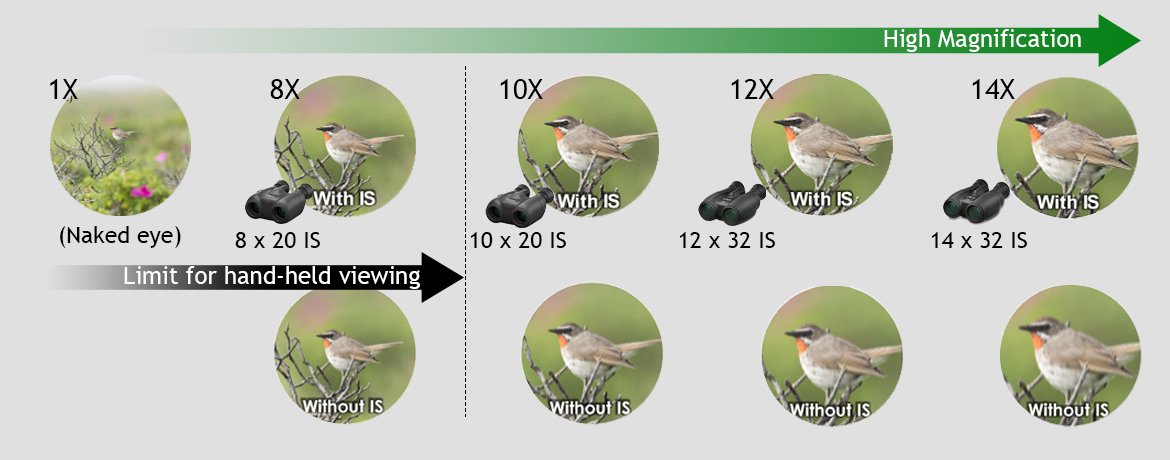Choose by Magnification

Shaking becomes prominent when the magnifcation goes beyond 8x on general binoculars, making it difficult to be used comfortably or for a long period of time. Using binoculars with an IS function or purchasing an adapter with a tripod when using high-magnification binoculars might help in reducing the image shaking issues.
There are various binoculars models available with different combinations of magnification, objective lenses, and effective diameters to fit in any situation and usage.



